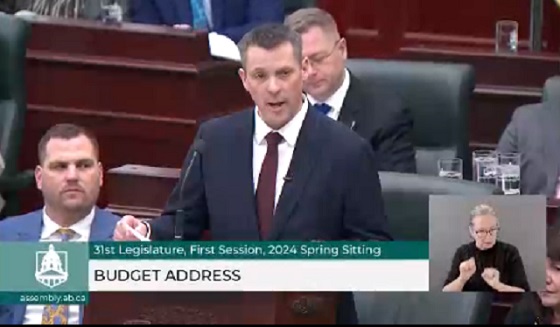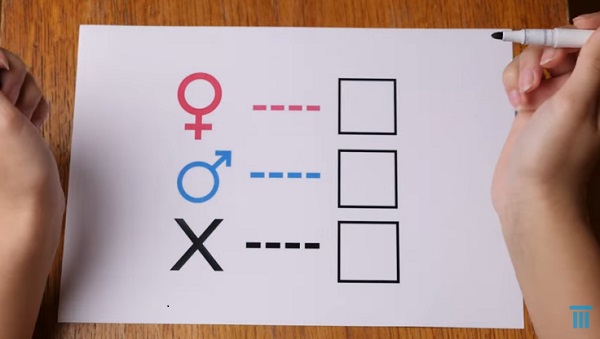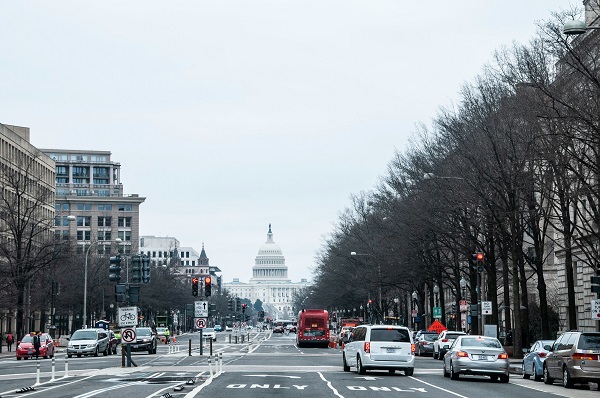Alberta
New tax bracket among features of Alberta’s 2024 Budget

Budget 2024: A responsible plan for a growing province
Budget 2024 is a responsible plan to strengthen health care and education, build safe communities and manage resources wisely to support a growing Alberta.
With a steady focus on fiscal responsibility and wise spending, Alberta’s government will continue to meet the needs of Albertans today and tomorrow. Budget 2024 presents three more years of balanced budgets, beginning with a forecast surplus of $367 million in 2024-25. Budget 2024 strengthens the vital services Albertans rely on and ensures those services remain sustainable over the long run.
“Alberta is growing. Budget 2024 is a plan that manages the pressures faced by a growing province today while securing the future for generations who follow. I’m proud of the choices we made in this budget that support Albertans’ top priorities and prepare our province to meet the challenges that lie ahead. Budget 2024 invests today and saves for tomorrow so we can continue to be the nation’s economic engine.”
Budget 2024 is a responsible plan that puts Albertans and Alberta families first by investing in their health, education, safety, and economic growth and success. Priority investments include:
- Health and mental health supports: $26.2 billion in operating dollars, a 4.4 per cent increase over the forecast for 2023-24.
- Education supports: $9.3 billion in operating expenses, a 4.4 per cent increase from last year, to support record enrolment growth, hire hundreds more education staff including teachers and educational assistants, and support students with specialized needs.
- Social supports: $2.9 billion in 2024-25 to Albertans through the Assured Income for the Severely Handicapped program, the Alberta Seniors Benefit and other social support programs, plus $355 million for Alberta Child and Family Benefit payments to help low-income families, indexing payments to inflation and providing for more eligible clients.
- Workforce supports: An increase of $102 million over three years to add 3,200 apprenticeship classroom seats in high-demand areas and support curriculum updates to the apprenticeship program, as well as $62.4 million over three years to expand physician education, including through rural health training centres.
- Public safety supports: $1.2 billion in 2024-25 operating expense for Public Safety and Emergency Services to support police and mental health crisis teams, deploy street-level police officers to tackle crime in Calgary and Edmonton, and provide $74 million to the Alberta Emergency Management Agency.
- Wildfire supports: $151 million operating expense over the next three years for enhancements to the Wildfire Management Program and $55 million in capital investment for new firefighting equipment and facilities.
- The fiscal framework provides the flexibility the government needs to respond quickly to disasters and emergencies as they arise, including a $2-billion contingency.
- Water management and drought preparedness supports: $1.3 billion in capital funding over the next three years, including $251 million to better prepare the province for floods and droughts; $272 million for irrigation projects; and $539 million to support municipal water supply and wastewater infrastructure.
- Budget 2024 also provides additional operating support of $19 million over three years for the Strategy to Increase Water Availability and $9 million for water management initiatives.
- Capital supports: In total, $25 billion over three years in capital funding to build schools, hospitals, roads and other infrastructure, supporting 24,000 direct jobs and 13,000 indirect jobs across the province.
Alberta is well-positioned to remain the economic engine of Canada, with real gross domestic product forecast to grow 2.9 per cent in 2024, but the province continues to face challenges. While Alberta’s growing population is supporting economic activity and helping to ease labour shortages, it is also increasing demand for housing, health care, education and other public services. Ongoing geopolitical turmoil, uncertainty from federal government policies and high consumer prices risk dampening growth. Budget 2024 prepares Alberta to face those headwinds, with its responsible plan that invests in Albertans today and builds prosperity for tomorrow.
The fiscal framework introduced in spring 2023 requires the government to use at least half of any available surplus cash to pay down debt, freeing up more money to support Albertans. Taxpayer-supported debt will be reduced by a forecast $3.2 billion in the 2023-24 fiscal year. With the government’s commitment to paying down debt, the total taxpayer-supported debt will be $78.4 billion at the end of 2024-25.
High interest rates and the need to refinance maturing debt are driving up debt-servicing costs (the interest payments and fees on the debt) paid by taxpayers. As a result, debt-servicing costs are growing by $229 million in 2024-25 to $3.4 billion. While high interest rates on refinanced maturing debt are driving up those costs in the short term, the government’s strategic debt repayment plan will save Albertans millions in the long term.
The province is retaining more than $1 billion in investment earnings from 2023-24 in the Alberta Heritage Savings Trust Fund. Alberta’s government will also deposit another $2 billion from the Alberta Fund, increasing the value of the Heritage Savings Trust Fund to a forecast $25 billion. This is a significant investment in the future of Albertans and the province’s main long-term savings fund
Revenue
- In 2024-25, total revenue is estimated to be $73.5 billion, which is $2.1 billion lower than the third-quarter forecast for 2023-24.
- Revenue from personal income taxes is estimated to increase to $15.6 billion in 2024-25, up $365 million from the third-quarter forecast, and grow in the following two years as more people continue to move to Alberta.
- Corporate income tax revenue is estimated at $7 billion in 2024-25, down $176 million from the third-quarter forecast for 2023-24, but rising over the next two years.
- Non-renewable resource revenue is estimated to drop to $17.3 billion in 2024-25, from $19.4 billion forecast for 2023-24, and is forecast to pick up over the medium term.
Expense
- Total expense in 2024-25 is $73.2 billion, a 3.9 per cent increase from the forecast for 2023-24.
- Total expense is expected to be $74.6 billion in 2025-26 and $76.2 billion in 2026-27.
- Total operating expense in 2024-25 is $60.1 billion, a 3.9 per cent increase from the 2023-24 forecast.
- A contingency of $2 billion will help the province respond to disasters and emergencies and other in-year expense pressures, a $500-million increase from 2023-24.
Surplus
- A surplus of $367 million is forecast for 2024-25.
- Surpluses of $1.4 billion and $2.6 billion are forecast for 2024-25 and 2025-26, respectively.
Economic outlook
- In 2024, real gross domestic product is expected to grow by 2.9 per cent, up from the 2.6 per cent forecast at mid-year.
- Strong population growth is expected to continue at 3.7 per cent in the 2024 calendar year, down from 4.1 per cent growth in 2023.
Energy and economic assumptions, 2024-25
- West Texas Intermediate oil (USD/bbl) $74
- Western Canadian Select @ Hardisty (CND/bbl) $76.80
- Light-heavy differential (USD/bbl) $16
- ARP natural gas (CND/GJ) $2.90
- Conventional crude production (000s barrels/day) 507
- Raw bitumen production (000s barrels/day) 3,429
- Canadian dollar exchange rate (USD¢/CDN$) 75.90
- Interest rate (10-year Canada bonds, per cent) 3.70
Related information
Related news
- Budget 2024: Putting Albertans and Alberta families first (Feb 29, 2024)
- Budget 2024: Investing in safe, welcoming communities (Feb 29, 2024)
- Budget 2024: Maintaining Alberta’s economic advantage (Feb 29, 2024)
2025 Federal Election
Next federal government should recognize Alberta’s important role in the federation

From the Fraser Institute
By Tegan Hill
With the tariff war continuing and the federal election underway, Canadians should understand what the last federal government seemingly did not—a strong Alberta makes for a stronger Canada.
And yet, current federal policies disproportionately and negatively impact the province. The list includes Bill C-69 (which imposes complex, uncertain and onerous review requirements on major energy projects), Bill C-48 (which bans large oil tankers off British Columbia’s northern coast and limits access to Asian markets), an arbitrary cap on oil and gas emissions, numerous other “net-zero” targets, and so on.
Meanwhile, Albertans contribute significantly more to federal revenues and national programs than they receive back in spending on transfers and programs including the Canada Pension Plan (CPP) because Alberta has relatively high rates of employment, higher average incomes and a younger population.
For instance, since 1976 Alberta’s employment rate (the number of employed people as a share of the population 15 years of age and over) has averaged 67.4 per cent compared to 59.7 per cent in the rest of Canada, and annual market income (including employment and investment income) has exceeded that in the other provinces by $10,918 (on average).
As a result, Alberta’s total net contribution to federal finances (total federal taxes and payments paid by Albertans minus federal money spent or transferred to Albertans) was $244.6 billion from 2007 to 2022—more than five times as much as the net contribution from British Columbians or Ontarians. That’s a massive outsized contribution given Alberta’s population, which is smaller than B.C. and much smaller than Ontario.
Albertans’ net contribution to the CPP is particularly significant. From 1981 to 2022, Alberta workers contributed 14.4 per cent (on average) of total CPP payments paid to retirees in Canada while retirees in the province received only 10.0 per cent of the payments. Albertans made a cumulative net contribution to the CPP (the difference between total CPP contributions made by Albertans and CPP benefits paid to retirees in Alberta) of $53.6 billion over the period—approximately six times greater than the net contribution of B.C., the only other net contributing province to the CPP. Indeed, only two of the nine provinces that participate in the CPP contribute more in payroll taxes to the program than their residents receive back in benefits.
So what would happen if Alberta withdrew from the CPP?
For starters, the basic CPP contribution rate of 9.9 per cent (typically deducted from our paycheques) for Canadians outside Alberta (excluding Quebec) would have to increase for the program to remain sustainable. For a new standalone plan in Alberta, the rate would likely be lower, with estimates ranging from 5.85 per cent to 8.2 per cent. In other words, based on these estimates, if Alberta withdrew from the CPP, Alberta workers could receive the same retirement benefits but at a lower cost (i.e. lower payroll tax) than other Canadians while the payroll tax would have to increase for the rest of the country while the benefits remained the same.
Finally, despite any claims to the contrary, according to Statistics Canada, Alberta’s demographic advantage, which fuels its outsized contribution to the CPP, will only widen in the years ahead. Alberta will likely maintain relatively high employment rates and continue to welcome workers from across Canada and around the world. And considering Alberta recorded the highest average inflation-adjusted economic growth in Canada since 1981, with Albertans’ inflation-adjusted market income exceeding the average of the other provinces every year since 1971, Albertans will likely continue to pay an outsized portion for the CPP. Of course, the idea for Alberta to withdraw from the CPP and create its own provincial plan isn’t new. In 2001, several notable public figures, including Stephen Harper, wrote the famous Alberta “firewall” letter suggesting the province should take control of its future after being marginalized by the federal government.
The next federal government—whoever that may be—should understand Alberta’s crucial role in the federation. For a stronger Canada, especially during uncertain times, Ottawa should support a strong Alberta including its energy industry.
Alberta
Province announces plans for nine new ‘urgent care centres’ – redirecting 200,000 hospital visits

Expanding urgent care across Alberta
If passed, Budget 2025 includes $17 million in planning funds to support the development of urgent care facilities across the province.
As Alberta’s population grows, so does the demand for health care. In response, the government is making significant investments to ensure every Albertan has access to high-quality care close to home. Currently, more than 35 per cent of emergency department visits are for non-life-threatening conditions that could be treated at urgent care centres. By expanding these centres, Alberta’s government is enhancing the health care system and improving access to timely care.
If passed, Budget 2025 includes $15 million to support plans for eight new urgent care centres and an additional $2 million in planning funds for an integrated primary and urgent care facility in Airdrie. These investments will help redirect up to 200,000 lower-acuity emergency department visits annually, freeing up capacity for life-threatening cases, reducing wait times and improving access to care for Albertans.
“More people are choosing to call Alberta home, which is why we are taking action to build capacity across the health care system. Urgent care centres help bridge the gap between primary care and emergency departments, providing timely care for non-life-threatening conditions.”
“Our team at Infrastructure is fully committed to leading the important task of planning these eight new urgent care facilities across the province. Investments into facilities like these help strengthen our communities by alleviating strains on emergency departments and enhance access to care. I am looking forward to the important work ahead.”
The locations for the eight new urgent care centres were selected based on current and projected increases in demand for lower-acuity care at emergency departments. The new facilities will be in west Edmonton, south Edmonton, Westview (Stony Plain/Spruce Grove), east Calgary, Lethbridge, Medicine Hat, Cold Lake and Fort McMurray.
“Too many Albertans, especially those living in rural communities, are travelling significant distances to receive care. Advancing plans for new urgent care centres will build capacity across the health care system.”
“Additional urgent care centres across Alberta will give Albertans more options for accessing the right level of care when it’s needed. This is a necessary and substantial investment that will eventually ease some of the pressures on our emergency departments.”
The remaining $2 million will support planning for One Health Airdrie’s integrated primary and urgent care facility. The operating model, approved last fall, will see One Health Airdrie as the primary care operator, while urgent care services will be publicly funded and operated by a provider selected through a competitive process.
“Our new Airdrie facility, offering integrated primary and urgent care, will provide same-day access to approximately 30,000 primary care patients and increase urgent care capacity by around 200 per cent, benefiting the entire community and surrounding areas. We are very excited.”
Alberta’s government will continue to make smart, strategic investments in health facilities to support the delivery of publicly funded health programs and services to ensure Albertans have access to the care they need, when and where they need it.
Budget 2025 is meeting the challenge faced by Alberta with continued investments in education and health, lower taxes for families and a focus on the economy.
Quick facts
- The $2 million in planning funds for One Health Airdrie are part of a total $24-million investment to advance planning on several health capital initiatives across the province through Budget 2025.
- Alberta’s population is growing, and visits to emergency departments are projected to increase by 27 per cent by 2038.
- Last year, Alberta’s government provided $8.4 million for renovations to the existing Airdrie Community Health Centre.
Related information
-

 Uncategorized1 day ago
Uncategorized1 day agoPoilievre on 2025 Election Interference – Carney sill hasn’t fired Liberal MP in Chinese election interference scandal
-

 Business2 days ago
Business2 days agoCuba has lost 24% of it’s population to emigration in the last 4 years
-

 2025 Federal Election1 day ago
2025 Federal Election1 day ago2025 Election Interference – CCP Bounty on Conservative Candidate – Carney Says Nothing
-

 2025 Federal Election1 day ago
2025 Federal Election1 day ago2025 Federal Election Interference from China! Carney Pressed to Remove Liberal MP Over CCP Bounty Remark
-

 2025 Federal Election16 hours ago
2025 Federal Election16 hours agoChinese Election Interference – NDP reaction to bounty on Conservative candidate
-

 2025 Federal Election6 hours ago
2025 Federal Election6 hours agoChina Election Interference – Parties Received Security Briefing Days Ago as SITE Monitors Threats to Conservative Candidate Joe Tay
-

 Aristotle Foundation2 days ago
Aristotle Foundation2 days agoCanada has the world’s MOST relaxed gender policy for minors
-

 International2 days ago
International2 days agoTrump signs executive order to make Washington D.C. “safe and beautiful”





